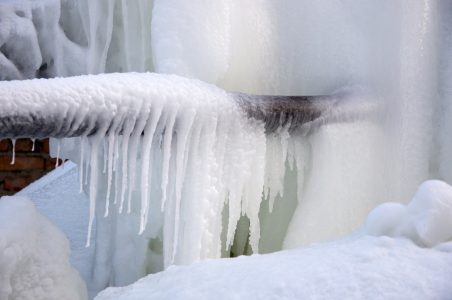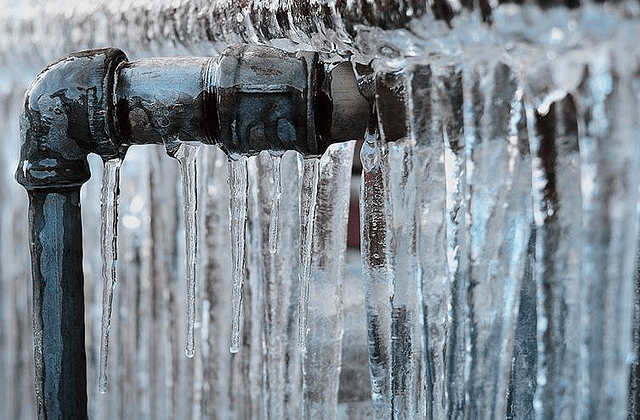Critical Strategies for Avoiding Frozen Pipes in Winter
Critical Strategies for Avoiding Frozen Pipes in Winter
Blog Article
This great article listed below involving How to prepare your home plumbing for winter weather is exceptionally enlightening. Read it yourself and decide what you think of it.

Winter can wreak havoc on your plumbing, especially by freezing pipes. Here's how to prevent it from occurring and what to do if it does.
Introduction
As temperatures decrease, the danger of icy pipelines boosts, possibly bring about costly fixings and water damages. Recognizing exactly how to avoid icy pipelines is critical for home owners in cool climates.
Prevention Tips
Insulating susceptible pipelines
Cover pipelines in insulation sleeves or make use of warmth tape to protect them from freezing temperatures. Focus on pipelines in unheated or external areas of the home.
Home heating methods
Maintain indoor spaces properly heated up, particularly locations with plumbing. Open up closet doors to allow cozy air to flow around pipelines under sinks.
How to identify frozen pipelines
Try to find reduced water circulation from taps, unusual odors or noises from pipelines, and visible frost on exposed pipes.
Long-Term Solutions
Structural changes
Consider rerouting pipelines far from outside walls or unheated areas. Add extra insulation to attics, cellars, and crawl spaces.
Updating insulation
Buy high-grade insulation for pipelines, attics, and walls. Appropriate insulation aids keep consistent temperatures and reduces the risk of frozen pipelines.
Securing Outside Pipes
Yard pipes and exterior faucets
Detach and drain pipes garden hoses before winter season. Set up frost-proof faucets or cover outside taps with shielded caps.
Comprehending Icy Pipes
What causes pipelines to freeze?
Pipelines freeze when revealed to temperature levels listed below 32 ° F (0 ° C) for prolonged periods. As water inside the pipes ices up, it broadens, taxing the pipe wall surfaces and potentially triggering them to break.
Threats and problems
Frozen pipelines can lead to water supply disturbances, home damage, and expensive repair services. Ruptured pipelines can flooding homes and cause considerable architectural damages.
Indicators of Frozen Pipes
Identifying frozen pipes early can stop them from rupturing.
What to Do If Your Pipelines Freeze
Immediate actions to take
If you think icy pipes, keep faucets open up to alleviate pressure as the ice thaws. Make use of a hairdryer or towels soaked in warm water to thaw pipes gradually.
Verdict
Protecting against icy pipelines calls for positive steps and quick reactions. By recognizing the causes, indications, and safety nets, home owners can safeguard their pipes throughout winter.
6 Proven Ways to Prevent Frozen Pipes and Protect Your Home
Disconnect and Drain Garden Hoses
Before winter arrives, start by disconnecting your garden hoses and draining any remaining water. Close the shut-off valves that supply outdoor hose bibs and leave the outdoor faucet open to allow any residual water to drain. For extra protection, consider using faucet covers throughout the colder months. It’s also important to drain water from any sprinkler supply lines following the manufacturer’s directions.
Insulate Exposed Pipes
Insulating your pipes is an effective way to prevent freezing. Pipe insulation is readily available at home improvement stores and is relatively inexpensive. Pay close attention to pipes in unheated areas such as the attic, basement, crawl spaces, or garage. Apply foam insulation generously to create a buffer against the cold. You can also wrap your pipes in heat tape or thermostat-controlled heat cables for added warmth.
Seal Air Leaks
Inspect your home for any cracks or openings that could let in cold air. Seal any holes around the piping in interior or exterior walls, as well as the sill plates where your home rests on its foundation. Additionally, make sure to keep your garage door closed unless you’re entering or exiting. Leaving it open creates a significant air leak that can lead to frozen pipes.
Allow Warm Air Circulation
During cold snaps, it’s essential to allow warm air to circulate evenly throughout your home. Leave interior doors ajar to promote better airflow. Open kitchen and bathroom cabinets to help distribute heat consistently around the rooms. If you have small children or pets, be sure to remove any household chemicals or potentially harmful cleaners from open cabinets for safety.
Let Faucets Drip
A small trickle of water can make a big difference in preventing ice formation inside your pipes. When temperatures drop significantly, start a drip of water from all faucets served by exposed pipes. This continuous flow helps prevent the water from freezing. Additionally, running a few faucets slightly can relieve pressure inside the pipes, reducing the chances of a rupture if the water inside does freeze.
https://choateshvac.com/6-proven-ways-to-prevent-frozen-pipes-and-protect-your-home/

Do you like more info about 6 Ways to Prevent Frozen Pipes? Put feedback down the page. We'd be glad to listen to your opinion about this posting. Hoping to see you back again before long. So long as you enjoyed our article please be sure to share it. Many thanks for taking the time to read it.
Start Now Report this page